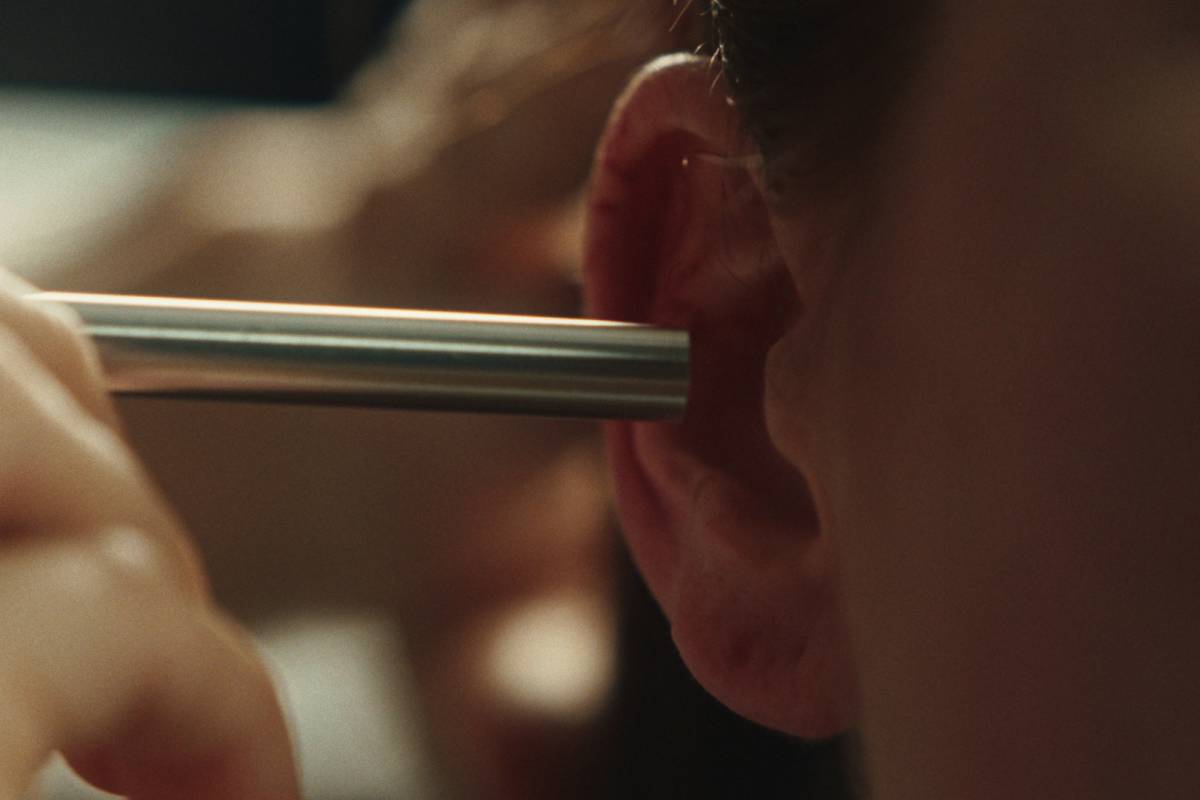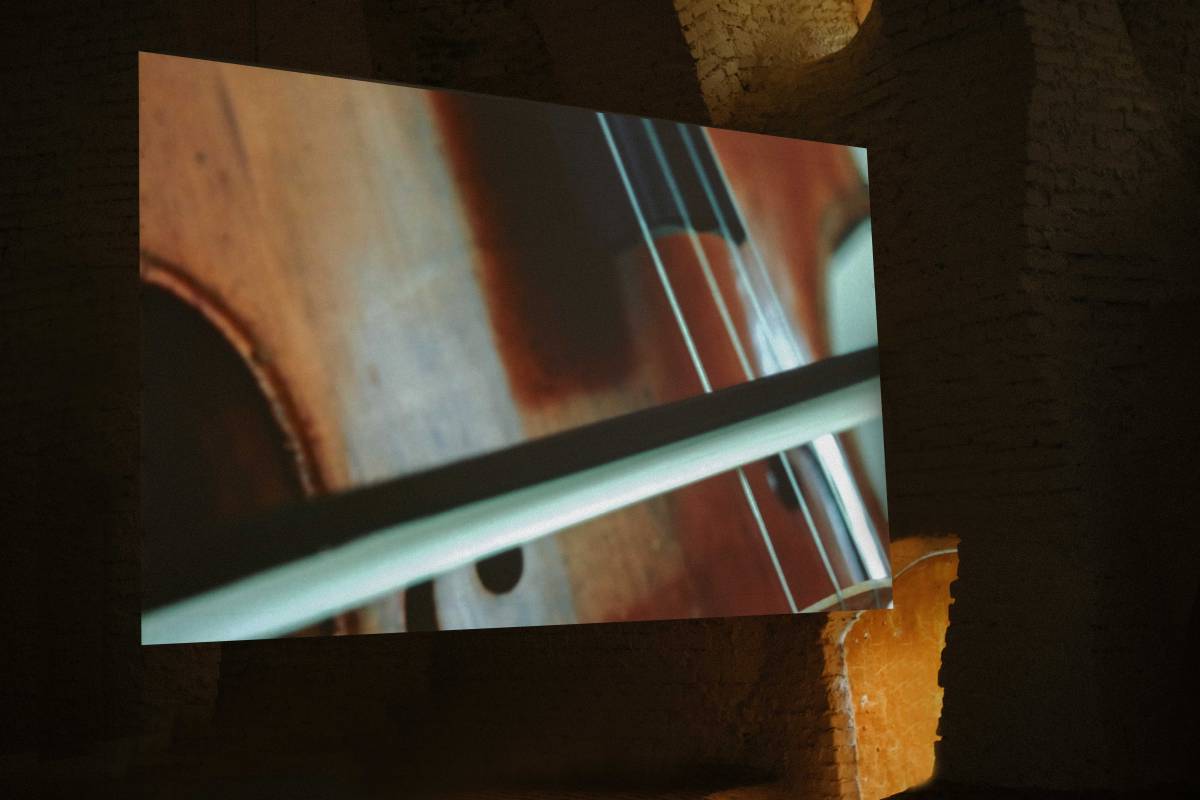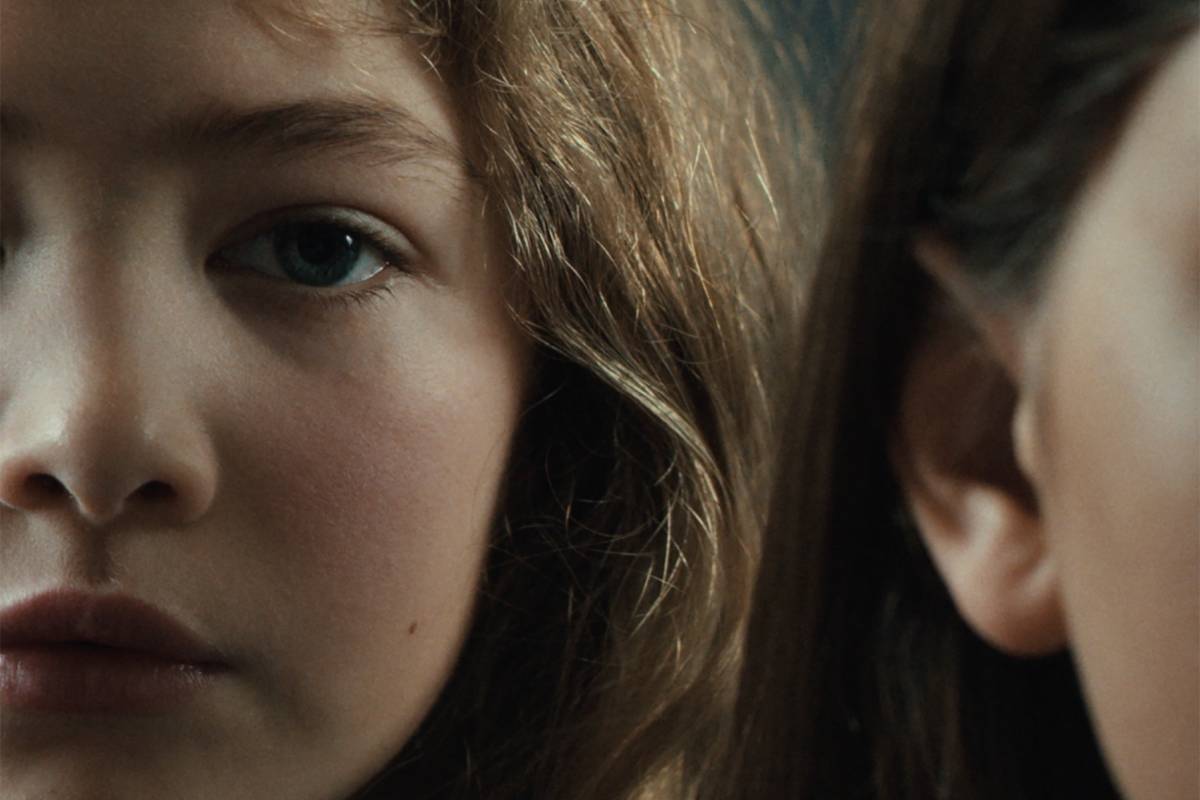Soit je suis morte soit je deviens oiseau
In 2021 Bastien Gallet and I starting to imagine a cycle of three films. It tells the story of two metamorphoses. Two women are transformed. At first there are only signs. One is a cellist. At the beginning of the film, during a concert, violent tinnitus prevents her from playing. The other is an art restorer. When she comes into contact with a hammered metal floor, she experiences unusual sensations and emotions and develops a form of hyperempathy. Visions appear to her which she does not know if they refer to her past or to that of the object. Something is happening to them, which they will interpret as symptoms of an unknown evil. But these symptoms are the first signs of a transformation that will affect their whole being. It is by accepting them and through the intermediary of three objects that they will be led to meet each other. A third character accompanies them: the Three-little-girls, whom they meet several times. But the Three-little-girls also exist on another plane made of figures, lines and voices, where everything is replayed and transformed. The exhibition at IAC Villeurbanne is a fragment of this narrative, consisting of three installations. Le loup dont la queue est poussée par le vent [The wolf whose tail is blown by the wind], Daphné [Daphne] and Soit je suis morte soit je deviens oiseau [Either I am dead or I become a bird]. A sound installation crosses the three spaces and links them.
Le loup dont la queue est poussée par le vent
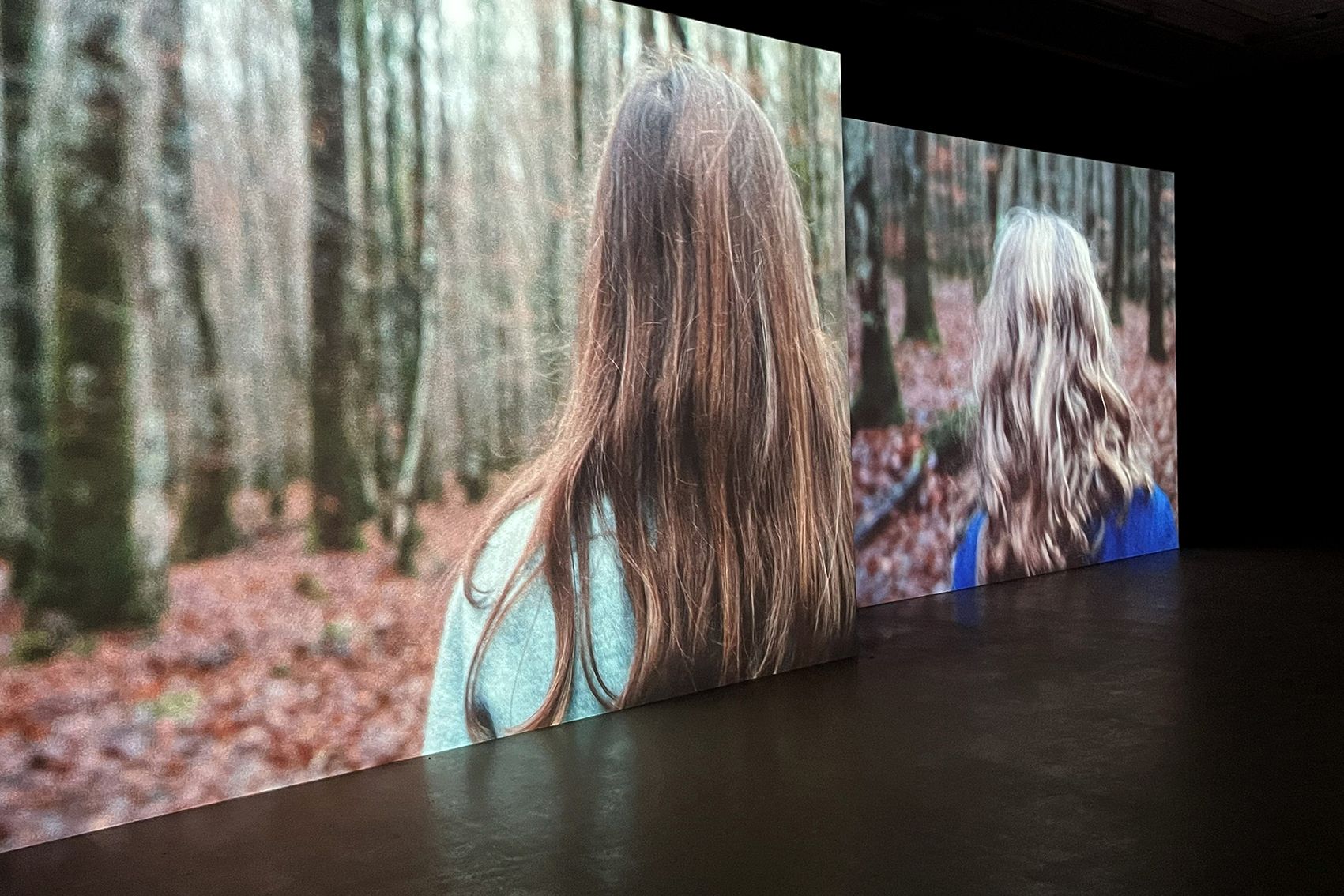
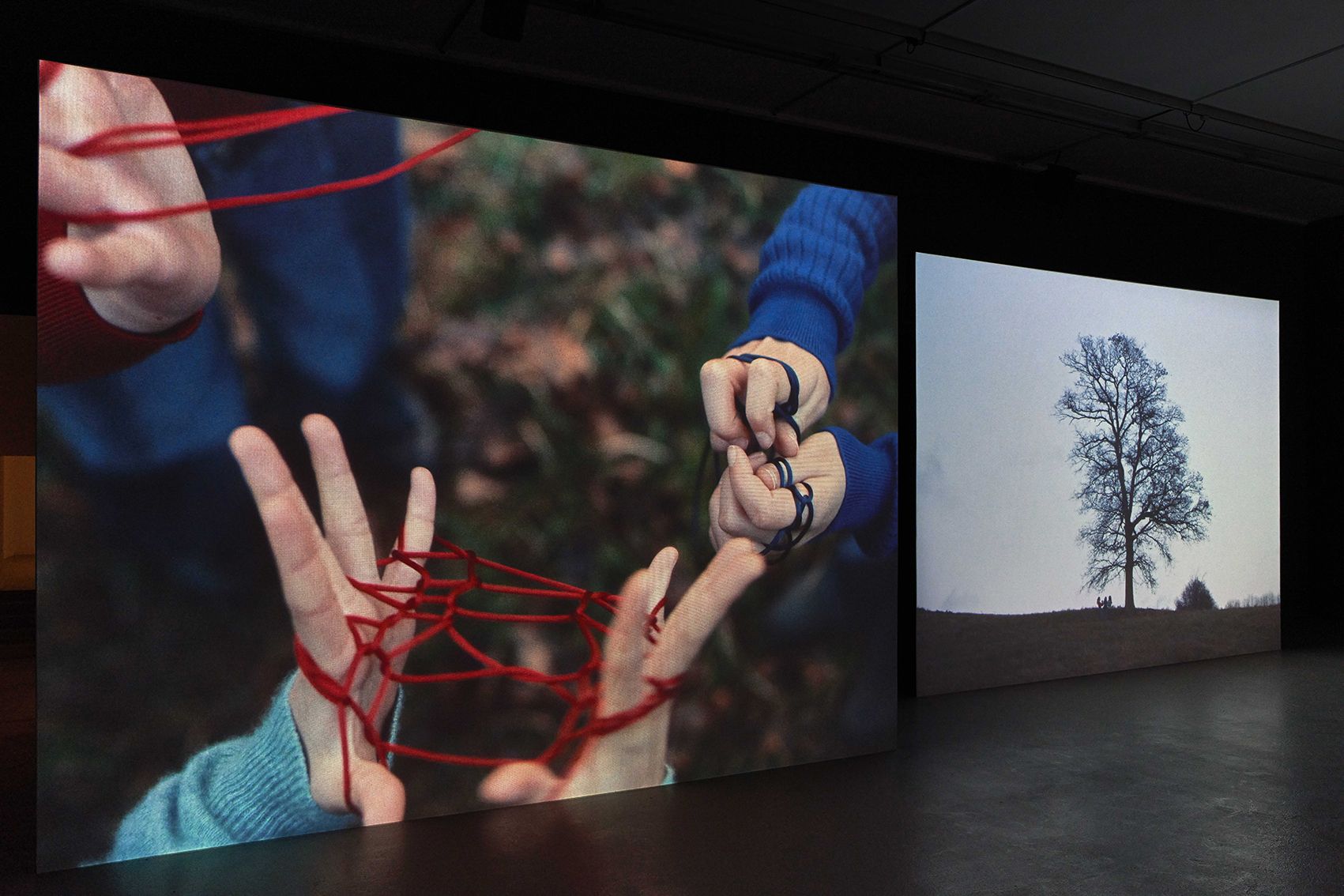
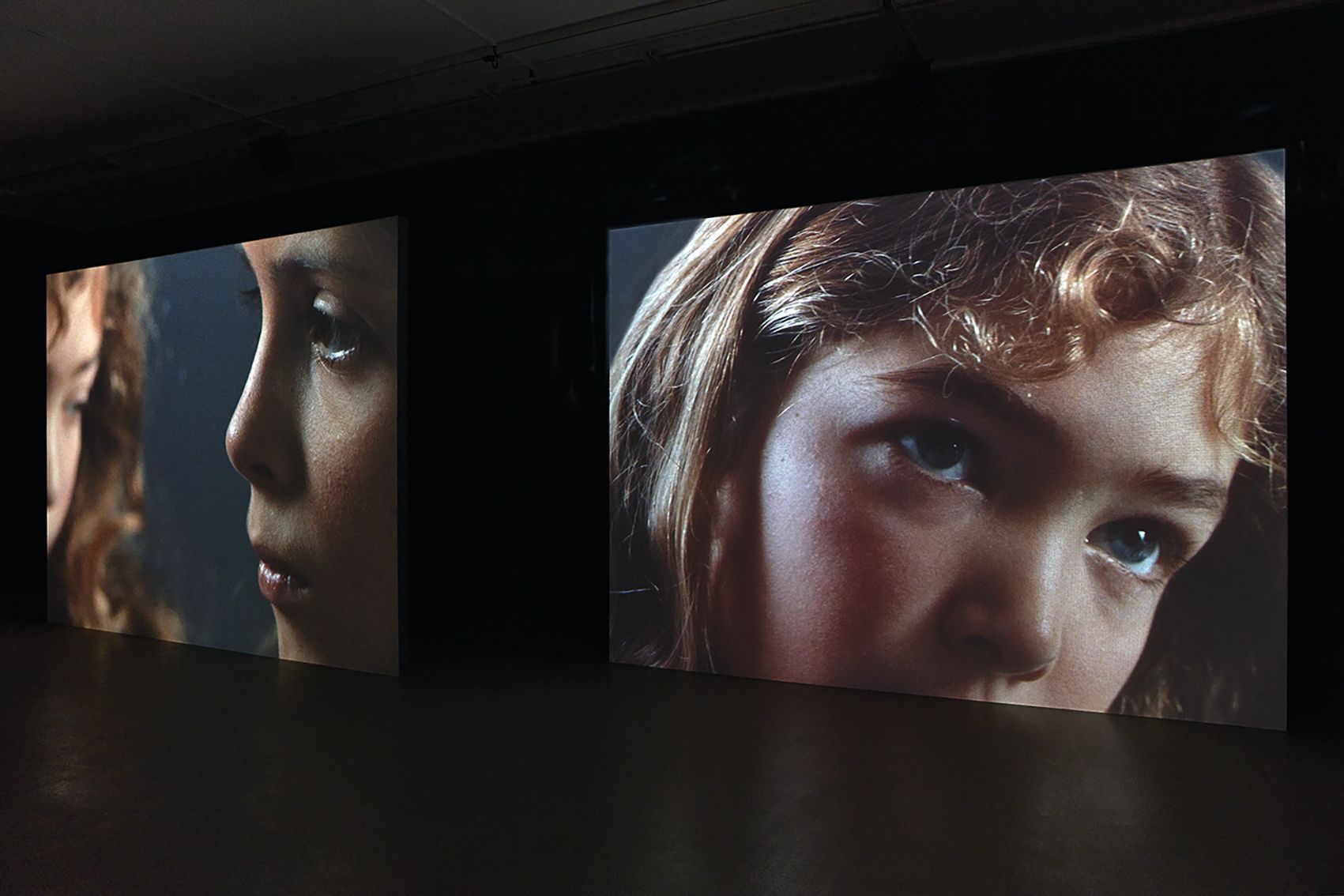
This title is borrowed from an Inuit game which consists of making figures with a loop of string that is passed around the fingers. These figures are used to tell stories. Each figure represents something (animal, concept, part of the body, phenomenon, etc.). You move from one figure to another through intermediary forms and this is what determines the story. The two screens show three little girls. Their faces are fragmented as if they were a single entity. They tell a story, that of the creation of a game which is also the creation of a world. They contradict each other, cut each other off and we gradually see this world materialize: in the images that follow, through sound and through the sculptures. The breath of the three little girls becomes a wind that invades the whole space. They split into two, multiply, we see them walking separately in the forest and then, in the last shot of the film, they are reunited again. They play the game of strings. To keep on telling the story, several people are needed, but gestures replace words. They make a figure, the one that will be hammered on the floor of the next room, Daphné.
Daphné
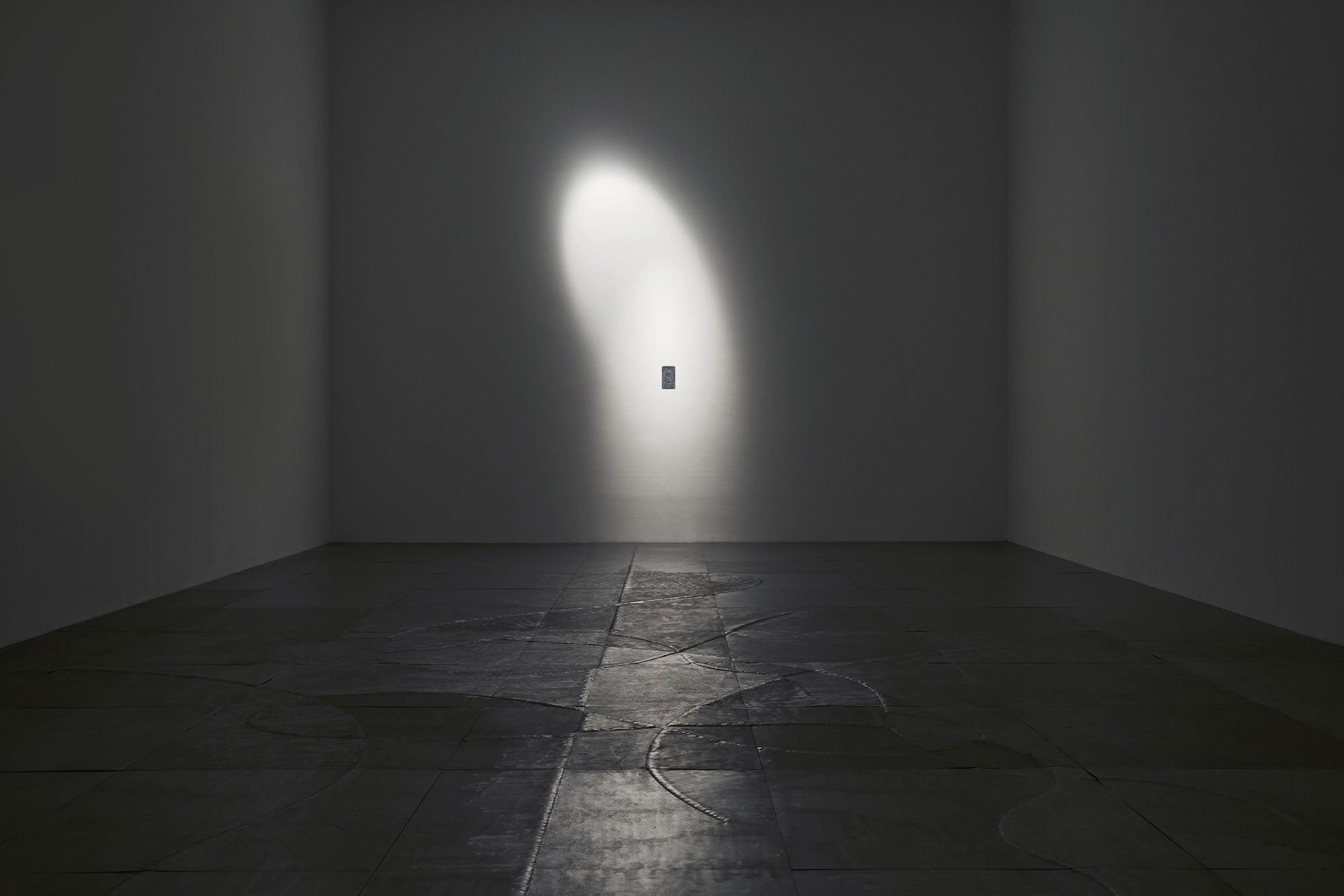
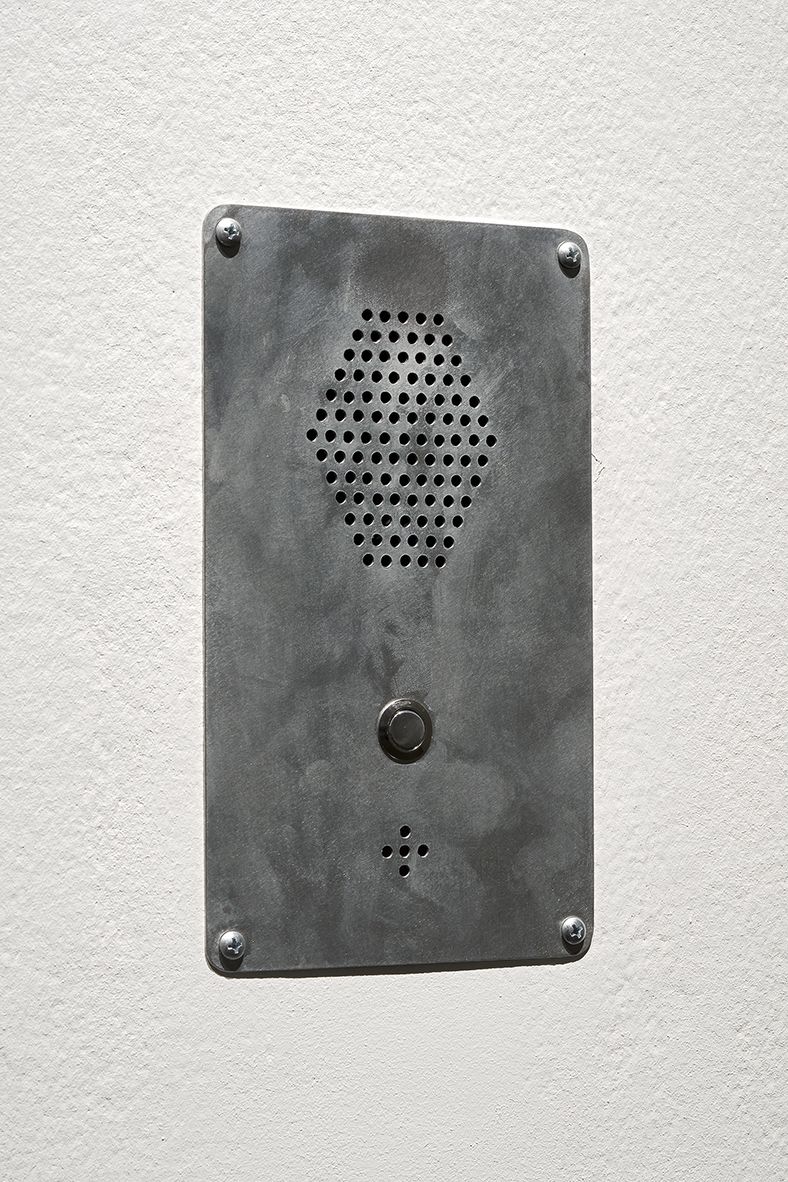
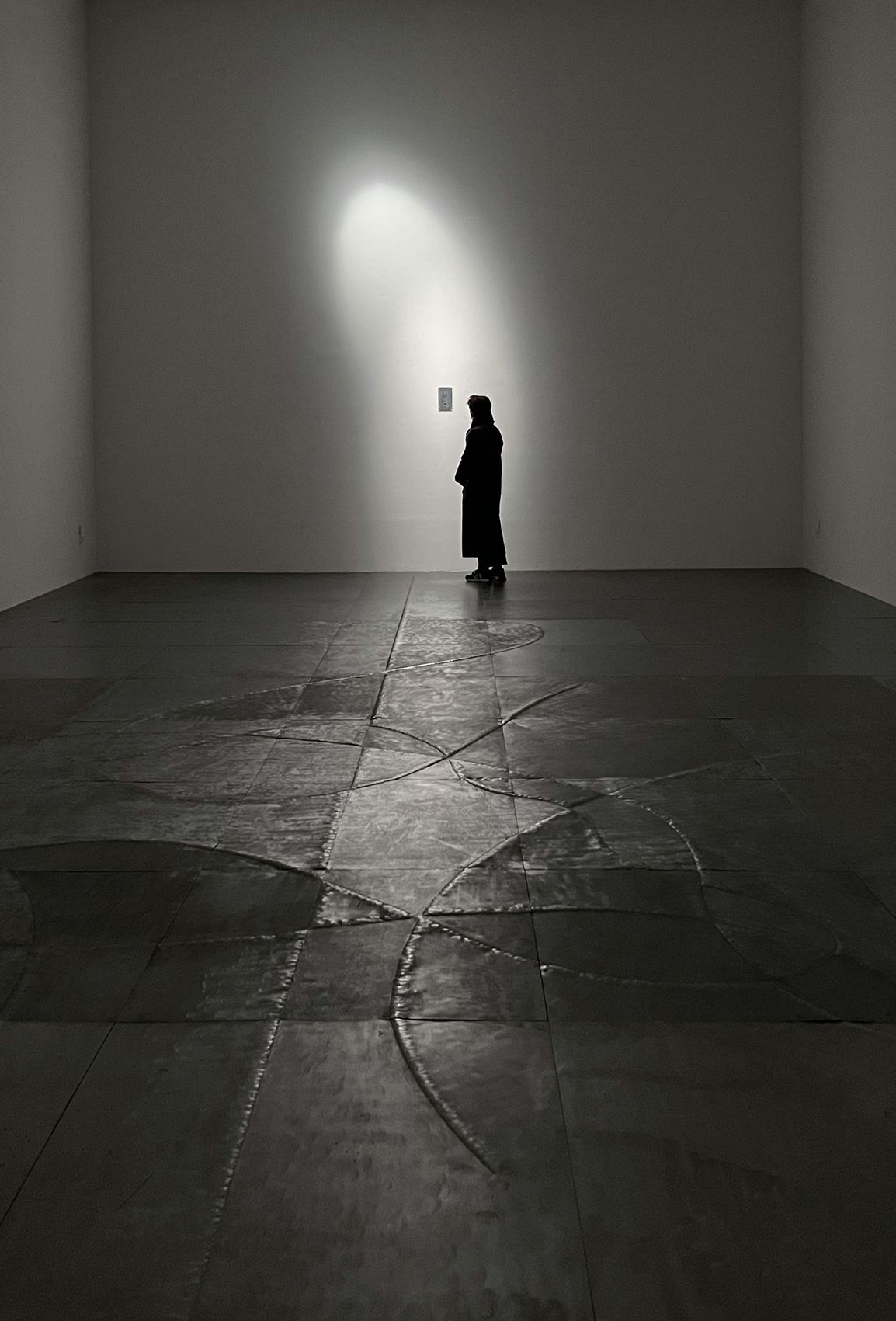
A metal floor is hammered with lines that you discover as you walk across it. They invite us to follow them. At the back of the room, an intercom stands out in the light of a projector. A voice comes out and addresses us. You have to come closer to hear it, to share its space. She tells the story of the floor. It has not been added to the to the place, the place was designed around it, to welcome it, to clothe itself with it. This floor is a skin. It bears the scars of the place. Scars. The central design is handmade, the metal is struck with all the imperfections that this gesture entails, to create a relief. This drawing takes up the lines of the string figure seen in the film. Another technique is added to (opposed to) to that of the hand. Certain lines are extracted and cut out by a digital machine. These two gestures are assembled to form a score that can be interpreted and give rise to performances. The first one will be walked, we will follow the thread, the second one will be played, we will interpret its signs.The voices of three little girls can be heard coming from a third space. They sing a nursery rhyme.
Soit je suis morte soit je deviens oiseau
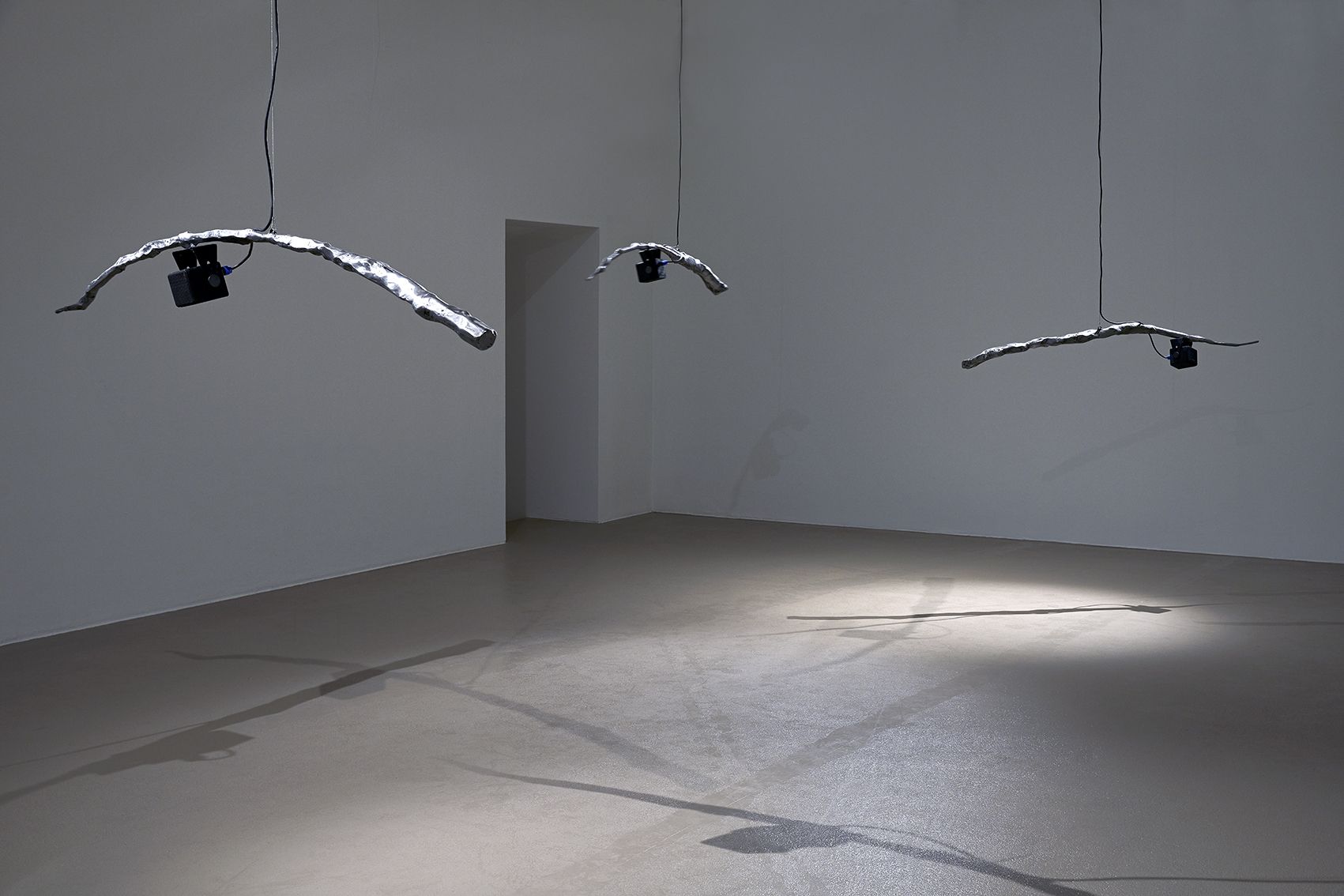
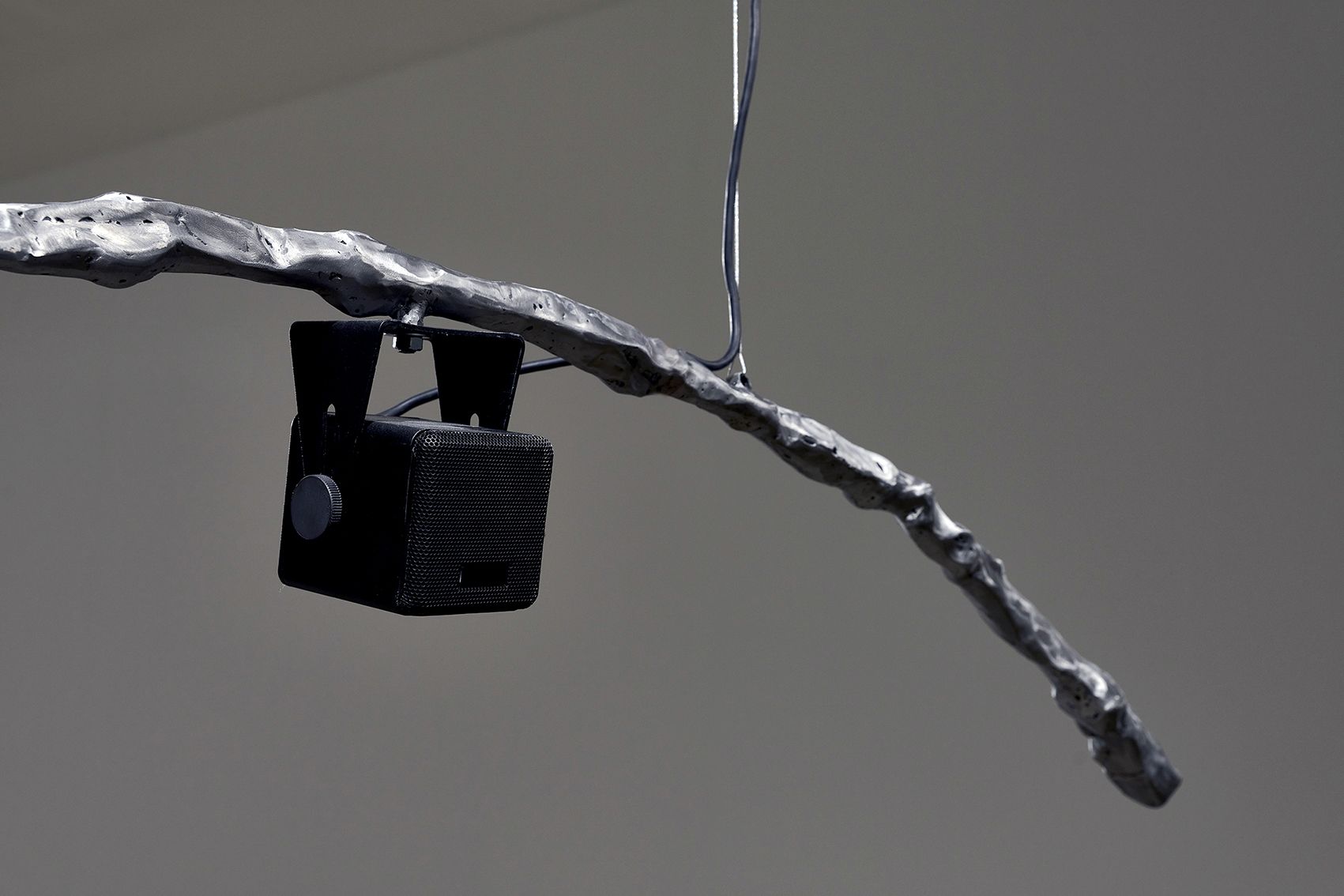
Three mobiles are suspended from the ceiling, they rotate and with them the voices are set in motion by the three speakers perched there. The composition is random, sometimes we hear snatches of sentences, sometimes the of sentences, sometimes the whole rhyme which creates an echo with the film. “Three little girls do not listen, lose their skin, lose their voice. They change into what they are not. Paws, fur and disarray. Follow the line, skip the thread, walk the sign, run the furrow. If you follow the line your fingers will grow. If you skip the line your thoughts will fly […]”. When the voices become scarcer, we hear birdsong from a quadraphonic system installed in the ceiling. If we listen carefully, these songs may seem strange and sometimes we will recognize the tune of the nursery rhyme. It is in fact with the whistles of Johnny Rasse, a bird singer, that we have composed this forest made of winds, voices hanging from branches that have become metal, and almost human birds. The three little girls have become voices. They seem to have invented a world, perhaps the one they were telling us in the film. We hear a breath crossing the space, the voice in the intercom in the distance sings the nursery rhyme, the breaths become wind, the sounds are coordinated, it is raining.
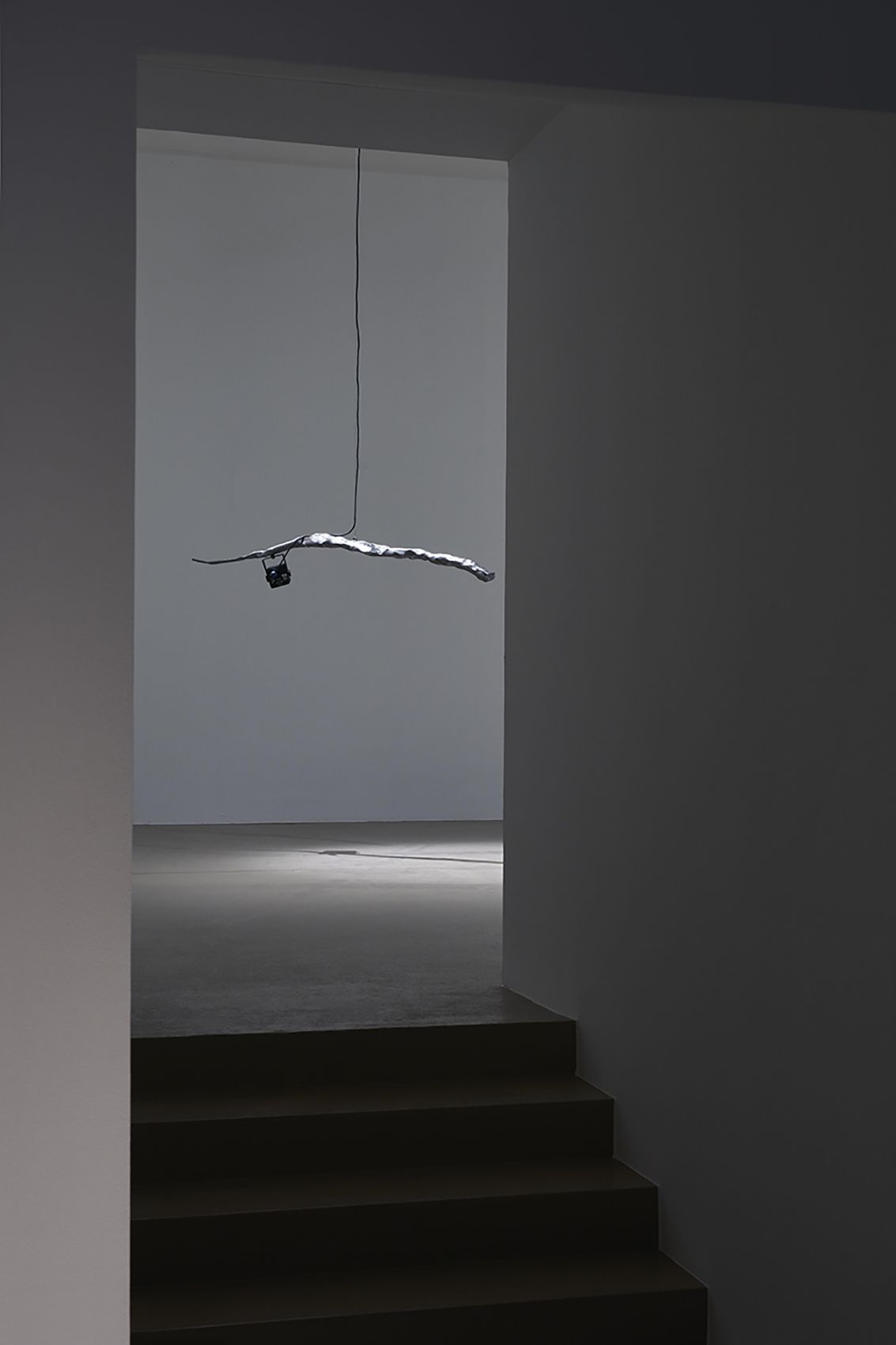
The title is borrowed from Anne Teresa De Keersmaeker, ‘Embodying an abstraction’.
View of the exhibition, IAC Villeurvanne, 2022
Le loup dont la queue est poussée par le vent, double digital projection, 14’, 2022
Daphné, 90 hammered steel slabs (90m2), intercom, 14’ mono source sound installation, 2022
Soit je suis morte soit je deviens oiseau, 3 steel mobiles (2m50), speakers, 14’ sound installation, 2022
Credits of the exhibition:
With Adriana Kerzanet, Lee Fortuné-Petit, Esther Husson-Perlié
With the participation of Johnny Rasse and Aurélia Petit
Sound installation: Nicolas Becker
Sound device and mix: Johan Lescure et Mélia Roger
Designer hammered steel slabs: Wendy Andreu
Graphic designers: Jauneau Vallance
Mobile production: Margot Pietri
Credits of the movie:
With Lee Fortuné-Petit, Esther Husson-Perlié et Adriana Kerzanet
Photography: Martin Roux and Paul Bony
Sound: Erwan Kerzanet and Lou Jullien
Editing: Constance Vargioni
Sound design: Nicolas Becker
Color grading: Martin Roux
Electricity: Rémy Pigeard
Grip: Alexis Goyard
Logistics: Romain Bouville
Style: Sébastien Meyer
HMC: Kelly Simoes Silva
Assistant director: Mario Houles
Texte: Bastien Gallet
Composer: Quentin Sirjacq
Musical coach: Sarah Richards
Casting: Marie Vachette
Production: Amélie Lelong – Itinérance films
Pictures: Thomas Lannes
This project is supported by the Fondation des artistes, CNC – The National Center for Film and Moving Images, GRAME – The National Center for Experimental Music in Lyon.
